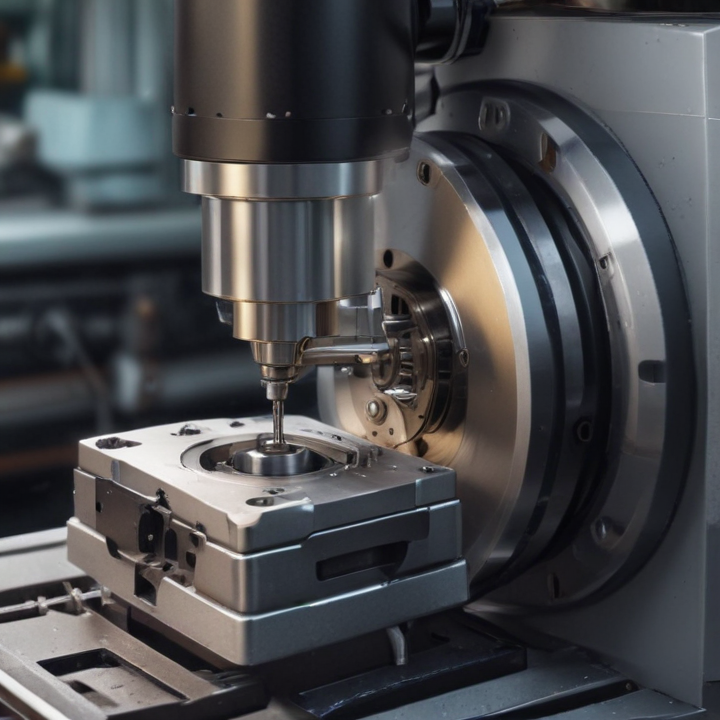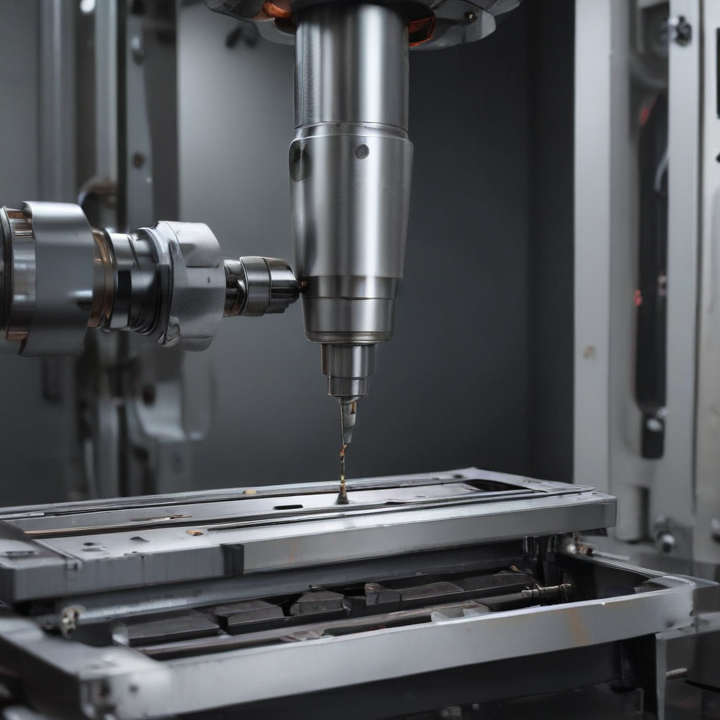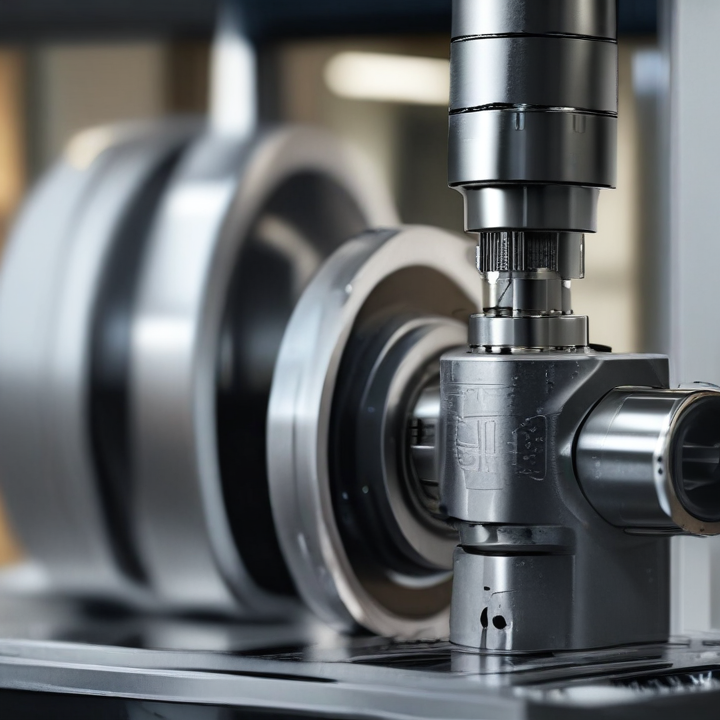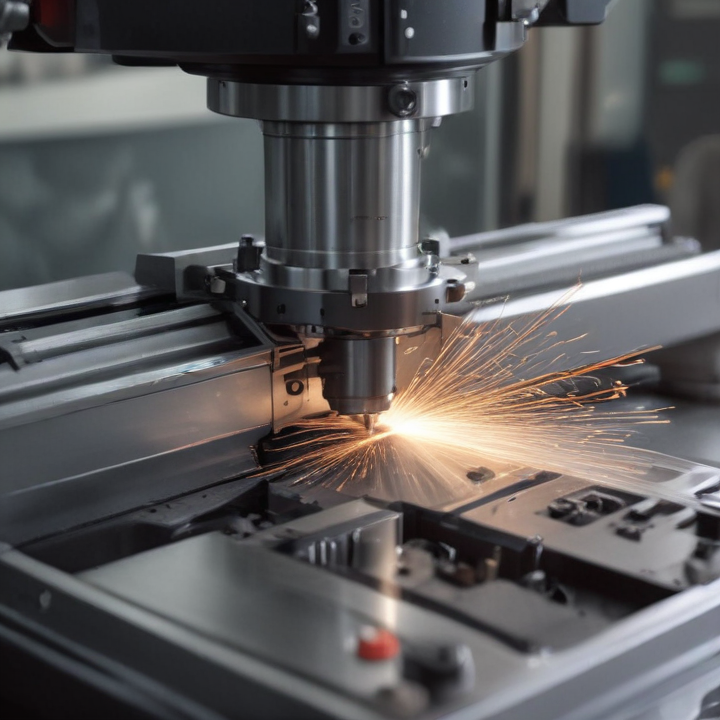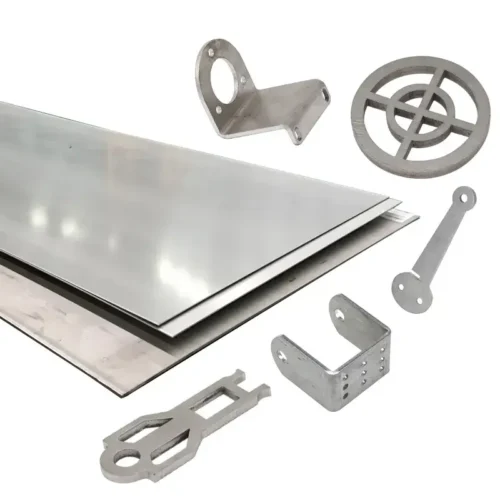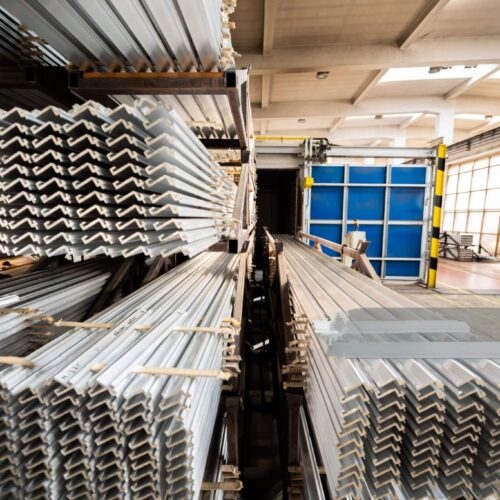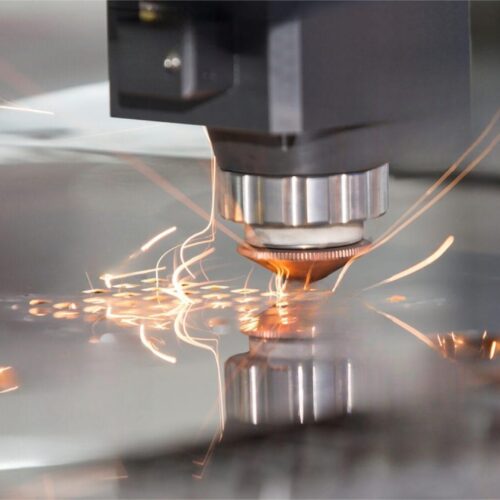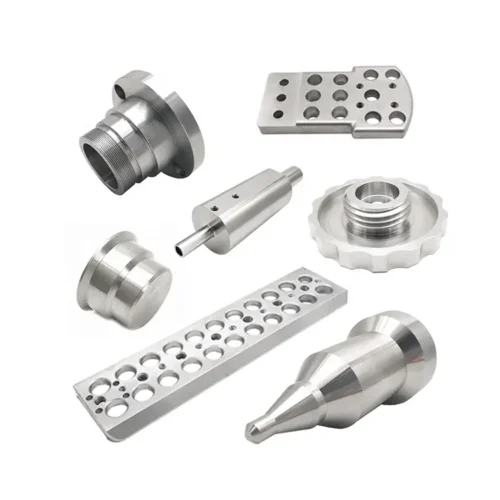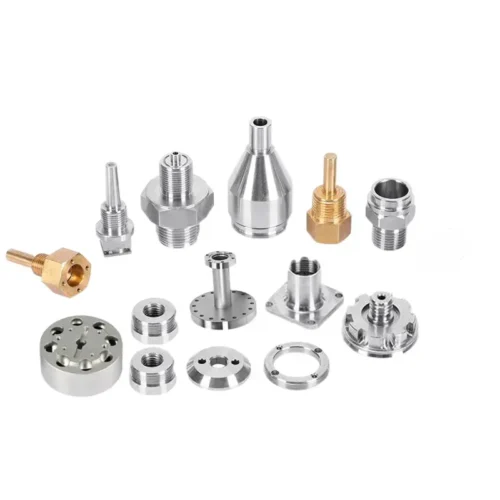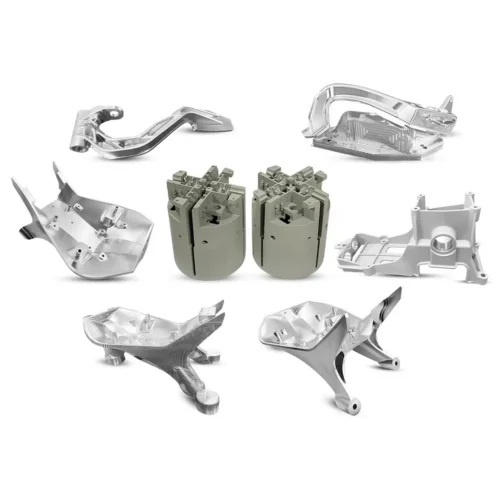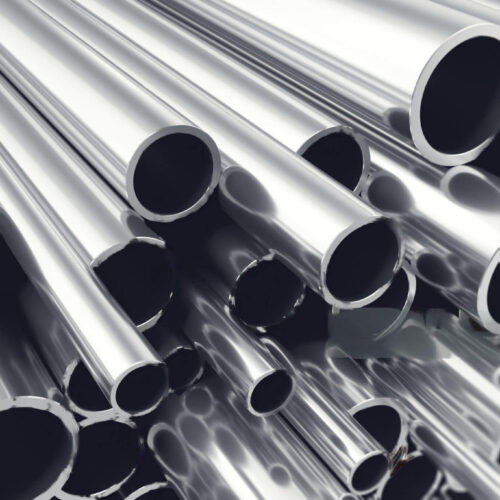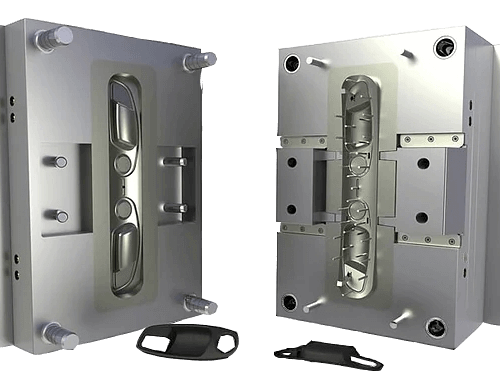automatic machining Safety Certifications
Automatic machining involves the use of automated equipment to perform manufacturing processes, and ensuring safety in this environment is critical. Here are some key safety certifications relevant to automatic machining:
1. **ISO 45001**: This is an international standard for Occupational Health and Safety (OHS) management systems. It helps organizations improve employee safety, reduce workplace risks, and create better, safer working conditions.
2. **OSHA Compliance**: In the United States, the Occupational Safety and Health Administration (OSHA) sets and enforces standards to ensure safe and healthful working conditions. Compliance with OSHA regulations is mandatory for most employers and includes specific standards for machinery and machine guarding.
3. **ANSI B11 Series**: These standards, developed by the American National Standards Institute (ANSI), cover safety requirements for the design, construction, care, and use of machine tools. The ANSI B11 series is comprehensive and widely recognized in the industry.
4. **CE Marking**: For equipment used in the European Economic Area (EEA), CE marking is mandatory. This indicates that the product complies with EU safety, health, and environmental protection standards. The Machinery Directive (2006/42/EC) specifically covers safety requirements for machinery.
5. **NFPA 79**: The National Fire Protection Association (NFPA) 79 standard is the Electrical Standard for Industrial Machinery. It outlines electrical safety requirements for the installation of industrial machinery and its associated equipment.
6. **UL (Underwriters Laboratories) Certification**: UL provides certification for product safety, including industrial equipment. This certification ensures that machinery meets specific safety standards.
7. **CSA (Canadian Standards Association) Certification**: Similar to UL, CSA certification indicates that machinery complies with Canadian safety standards.
These certifications ensure that automatic machining processes are safe for operators and comply with relevant safety regulations. Achieving and maintaining these certifications requires regular audits, adherence to safety protocols, and continuous improvement of safety measures.
List Reference Technical Parameters of “automatic machining”
Automatic machining, also known as CNC (Computer Numerical Control) machining, involves the use of computers to control machine tools. Here are some essential technical parameters to consider:
1. **Spindle Speed (RPM)**:
– Determines the rotation speed of the spindle.
– Affects the cutting speed and surface finish.
– Typical range: 100-30,000 RPM, depending on the material and tool.
2. **Feed Rate (mm/min or in/min)**:
– The speed at which the cutting tool or workpiece moves.
– Impacts the quality of the cut and tool life.
– Typical range: 10-10,000 mm/min.
3. **Cutting Speed (m/min or ft/min)**:
– The speed at which the cutting tool engages the workpiece.
– Influences tool wear and surface finish.
– Varies by material: e.g., 50-200 m/min for steel, 100-400 m/min for aluminum.
4. **Depth of Cut (mm or in)**:
– The thickness of the material removed in one pass.
– Affects the load on the tool and the machine.
– Typical range: 0.01-10 mm.
5. **Tool Material**:
– Common materials: High-Speed Steel (HSS), Carbide, Ceramics.
– Selection depends on workpiece material and machining conditions.
6. **Tool Geometry**:
– Includes parameters like tool shape, angle, and size.
– Affects chip formation, cutting forces, and surface finish.
7. **Machine Tolerance (µm or mils)**:
– The allowable deviation in the dimensions of the machined part.
– Higher precision machines have tighter tolerances.
– Typical tolerance: ±0.005-0.02 mm.
8. **Power and Torque**:
– Determines the capability of the machine to perform heavy-duty operations.
– Measured in kilowatts (kW) or horsepower (HP).
9. **Control System**:
– The software and hardware used to control the CNC machine.
– Popular systems include FANUC, Siemens, and Haas.
10. **Workpiece Material**:
– Includes metals (steel, aluminum), plastics, composites.
– Material properties influence tool selection and machining parameters.
11. **Coolant Type**:
– Used to reduce heat and friction.
– Types: water-based, oil-based, mist, dry.
These parameters are critical in defining the capabilities and performance of automatic machining processes.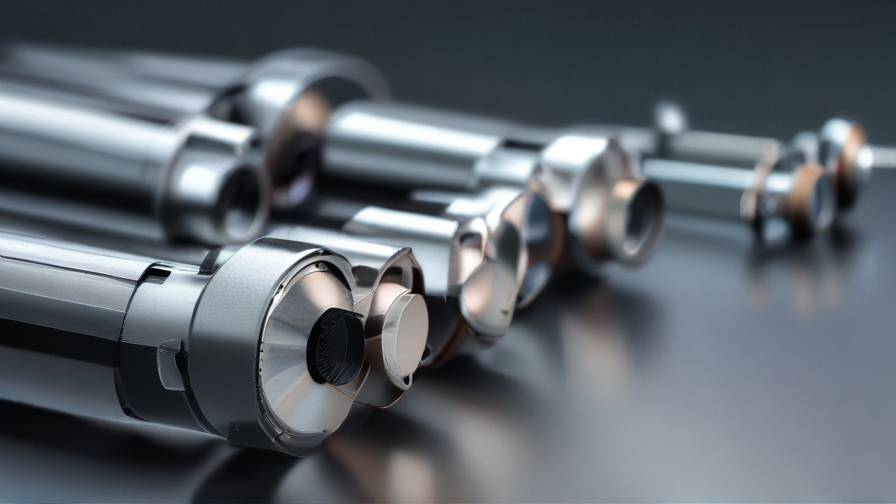
List Product features of “automatic machining”
Automatic machining, also known as CNC (Computer Numerical Control) machining, involves the use of computers to control machine tools. Here are its key product features:
1. **Precision and Accuracy**:
– Ensures high precision and accuracy in machining parts, with tolerances often within micrometers.
2. **Consistency**:
– Delivers consistent and repeatable results, crucial for producing identical parts in large quantities.
3. **Efficiency**:
– Reduces production time with rapid processing capabilities, leading to faster turnaround times.
4. **Complexity Handling**:
– Capable of producing complex shapes and intricate designs that would be difficult or impossible with manual machining.
5. **Material Versatility**:
– Can work with a wide range of materials, including metals, plastics, composites, and ceramics.
6. **Automation**:
– Operates with minimal human intervention, allowing for continuous production runs and reducing labor costs.
7. **Flexibility**:
– Easily programmable to accommodate various designs and modifications without extensive retooling.
8. **Safety**:
– Enhances operator safety by minimizing direct contact with cutting tools and machinery.
9. **Scalability**:
– Suitable for both small-batch and mass production, adapting to different manufacturing volumes.
10. **Cost-Effectiveness**:
– Although initial setup costs can be high, long-term operational costs are lower due to reduced waste, fewer errors, and less manual labor.
11. **Quality Control**:
– Integrated quality control features allow for real-time monitoring and adjustments, ensuring optimal product quality.
12. **Integration**:
– Compatible with various CAD/CAM software, facilitating seamless integration into existing manufacturing processes.
13. **Environmentally Friendly**:
– Reduced material wastage and optimized energy use contribute to a more sustainable manufacturing process.
These features make automatic machining an essential technology in modern manufacturing, enhancing productivity, precision, and overall operational efficiency.
List Various Types of “automatic machining”
Sure! Here are various types of automatic machining:
1. **CNC Machining (Computer Numerical Control)**:
– CNC milling
– CNC turning
– CNC drilling
2. **3D Printing (Additive Manufacturing)**:
– Stereolithography (SLA)
– Selective Laser Sintering (SLS)
– Fused Deposition Modeling (FDM)
– Direct Metal Laser Sintering (DMLS)
3. **Laser Cutting and Engraving**:
– CO2 laser
– Fiber laser
4. **Electrical Discharge Machining (EDM)**:
– Wire EDM
– Sinker EDM
5. **Waterjet Cutting**:
– Abrasive waterjet
– Pure waterjet
6. **Robotic Machining**:
– Robotic milling
– Robotic drilling
– Robotic welding
7. **Automatic Lathes**:
– Swiss-type automatic lathe
– Turret automatic lathe
8. **Plasma Cutting**:
– High-definition plasma cutting
– Standard plasma cutting
9. **Automatic Surface Finishing**:
– Automated polishing
– Automated grinding
– Automated deburring
10. **Automated Assembly**:
– Robotic assembly lines
– Automated screwing and fastening
Each type of automatic machining utilizes advanced technology to improve precision, efficiency, and consistency in manufacturing processes. These technologies are essential for producing complex parts and components in various industries, including automotive, aerospace, medical, and consumer electronics.
List Application of “automatic machining”
**Applications of Automatic Machining**
1. **Automotive Industry**: Automatic machining is widely used for producing engine components, transmission parts, and other critical automotive parts. It ensures high precision and consistency in mass production.
2. **Aerospace Industry**: Precision is paramount in aerospace. Automatic machining is used to manufacture parts for aircraft engines, landing gear, and structural components, meeting stringent quality standards.
3. **Medical Devices**: The production of medical implants, surgical instruments, and diagnostic equipment often involves automatic machining to achieve the required precision and hygiene standards.
4. **Electronics**: Automatic machining is essential in the electronics industry for creating components such as circuit boards, connectors, and housings with high accuracy and repeatability.
5. **Tool and Die Making**: Automatic machining produces molds, dies, and precision tools used in various manufacturing processes, ensuring high-quality output and extended tool life.
6. **Consumer Goods**: Products like household appliances, sporting goods, and personal gadgets benefit from automatic machining, which allows for the production of intricate and durable components.
7. **Energy Sector**: Components for wind turbines, solar panels, and other renewable energy systems are often produced using automatic machining to ensure reliability and efficiency.
8. **Heavy Machinery**: Parts for construction and agricultural machinery, such as gears, shafts, and hydraulic components, are manufactured using automatic machining to withstand harsh operational conditions.
9. **Defense Industry**: The production of military equipment, including weapons, vehicles, and communication devices, often relies on automatic machining for precision and robustness.
10. **Railway and Transport**: Automatic machining is used to create parts for trains, metro systems, and other transportation infrastructure, ensuring safety and durability.
Automatic machining integrates computer numerical control (CNC) systems to automate the manufacturing process, enhancing efficiency, reducing human error, and enabling complex geometries and high-quality finishes.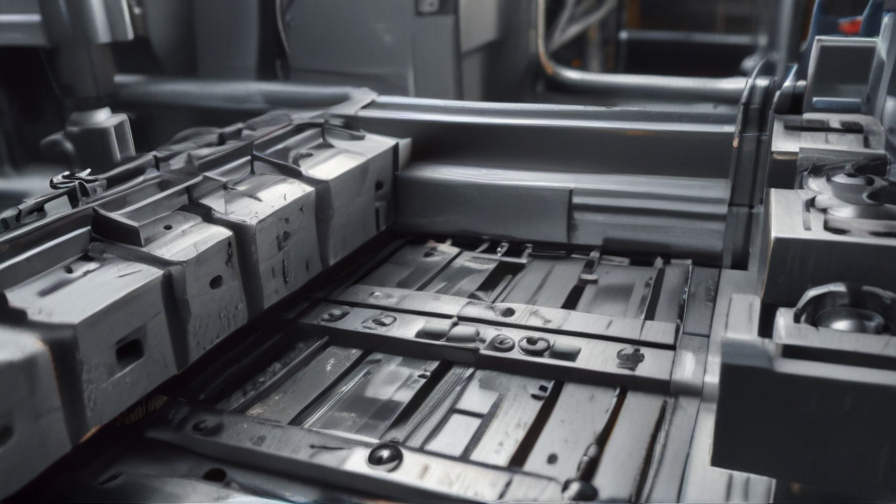
List Buyer Types of “automatic machining”
Automatic machining, which involves the use of computer-controlled machines for manufacturing, attracts a diverse range of buyers across various industries. Here are the main types of buyers:
1. **Automotive Industry**: Manufacturers and suppliers in this sector use automatic machining for producing high-precision components such as engine parts, transmission systems, and other critical mechanical components.
2. **Aerospace Industry**: Aerospace companies require high-precision and high-quality components for aircraft and spacecraft. Automatic machining ensures the consistency and accuracy needed for parts like turbine blades, landing gear components, and structural elements.
3. **Medical Device Manufacturers**: This industry relies on automatic machining to produce intricate and precise medical devices and instruments, including surgical tools, implants, and diagnostic equipment.
4. **Electronics Industry**: Companies producing consumer electronics, semiconductors, and other electronic components use automatic machining for creating small, detailed parts with high precision.
5. **Tool and Die Manufacturers**: These buyers use automatic machining to create molds, dies, and tooling used in various manufacturing processes. Precision and repeatability are crucial for these applications.
6. **Defense and Military Contractors**: They need high-precision parts for weapons, vehicles, and other military equipment. Automatic machining meets the stringent quality and reliability standards required in this sector.
7. **General Manufacturing**: Many general manufacturing companies across various sectors use automatic machining for producing a wide range of components and products, benefiting from the efficiency and precision of automated systems.
8. **Research and Development (R&D) Labs**: R&D facilities, especially those focusing on materials science, engineering, and technology, often use automatic machining to create prototypes and test models with high precision.
9. **Energy Sector**: Companies in the oil, gas, and renewable energy sectors use automatic machining for creating parts for turbines, pumps, and other critical equipment.
10. **Custom Machine Shops**: These shops offer custom machining services to various clients, requiring automatic machining to handle diverse and complex projects with precision.
Each of these buyer types values automatic machining for its ability to produce high-quality, precise components efficiently and consistently.
List “automatic machining” Project Types for Different Industries
Automatic machining, also known as automated machining, involves the use of CNC (Computer Numerical Control) machines and other automated systems to manufacture parts with precision and efficiency. Here are some project types for different industries:
### Aerospace Industry
1. **Turbine Blade Manufacturing**: Precision machining of complex geometries.
2. **Airframe Component Production**: Machining of lightweight yet strong structural components.
3. **Landing Gear Manufacturing**: High-strength component production with tight tolerances.
### Automotive Industry
1. **Engine Block Machining**: Automated machining for high-volume production.
2. **Transmission Component Production**: Precision parts for gear systems.
3. **Brake System Parts**: High-precision machining for safety-critical components.
### Medical Industry
1. **Surgical Instruments**: Precision machining for high-quality, sterile tools.
2. **Orthopedic Implants**: Automated production of complex shapes for implants.
3. **Dental Equipment**: Custom prosthetics and precision tools.
### Electronics Industry
1. **PCB Manufacturing**: Automated drilling and routing for printed circuit boards.
2. **Heat Sink Production**: Efficient machining of complex cooling components.
3. **Connector Machining**: Precision parts for high-speed data transfer connectors.
### Defense Industry
1. **Firearm Component Manufacturing**: High-tolerance parts for reliability.
2. **Missile Component Production**: Precision machining of aerodynamic parts.
3. **Radar System Parts**: Complex geometries for high-performance systems.
### Oil & Gas Industry
1. **Valve Component Manufacturing**: Precision parts for high-pressure environments.
2. **Pump Parts Production**: Automated machining for efficiency and durability.
3. **Drill Bit Manufacturing**: Complex geometries for high-performance drilling.
### Consumer Goods Industry
1. **Household Appliance Parts**: Efficient production of durable components.
2. **Sporting Goods**: Precision machining for high-performance equipment.
3. **Furniture Components**: Automated production for intricate designs.
### Renewable Energy Industry
1. **Wind Turbine Components**: High-strength parts for reliability.
2. **Solar Panel Frames**: Precision machining for durable frames.
3. **Hydro Turbine Parts**: Complex shapes for efficient energy conversion.
### Heavy Machinery Industry
1. **Excavator Parts**: Durable components for high-stress applications.
2. **Crane Component Production**: Precision parts for safe operation.
3. **Agricultural Equipment Parts**: Automated machining for efficiency and durability.
Each of these project types involves leveraging automation to enhance precision, increase production rates, and maintain high quality standards across various industries.
automatic machining Accessories Upgrades and Custom Manufacturing Options
### Automatic Machining Accessories, Upgrades, and Custom Manufacturing Options
**Automatic machining** is an integral part of modern manufacturing, offering precision and efficiency. Enhancing these machines with the right accessories and upgrades can significantly boost their performance and versatility.
#### **Key Accessories:**
1. **Tool Holders:**
– Ensure secure and precise tool placement.
– Various types like collet chucks, end mill holders, and drill chucks.
2. **Workholding Devices:**
– Vices, clamps, and fixtures that stabilize workpieces.
– Rotary tables for complex angles and continuous machining.
3. **Coolant Systems:**
– Essential for temperature control and lubrication.
– Options include mist, flood, and high-pressure coolant systems.
4. **Probes and Sensors:**
– Enhance accuracy by providing real-time data.
– Touch probes for workpiece measurement and tool setting probes for tool length and diameter measurement.
5. **Chip Management Systems:**
– Conveyor systems and chip augers to handle debris.
– Improve machine uptime and reduce manual cleaning.
#### **Upgrades:**
1. **CNC Control Upgrades:**
– Latest software for improved user interface and functionalities.
– Enhanced processing speeds and connectivity options.
2. **Spindle Upgrades:**
– Higher speed and power for diverse materials.
– Improved bearings and cooling systems for longevity and precision.
3. **Automation Integration:**
– Robotic arms and automated pallet changers for continuous operation.
– Reduces manual intervention, increasing productivity.
4. **Precision Enhancements:**
– Linear scales and rotary encoders for improved feedback and accuracy.
– Vibration dampening systems for smoother operation.
#### **Custom Manufacturing Options:**
1. **Tailored Tooling:**
– Custom tools designed for specific tasks or materials.
– Improve efficiency and reduce wear.
2. **Specialized Fixtures:**
– Custom fixtures for unique workpieces.
– Enhances stability and precision.
3. **Machine Customization:**
– Adjust machine dimensions and capabilities to fit specific needs.
– Includes adding additional axes or modifying bed size.
4. **Software Customization:**
– Tailored software solutions for specific industry requirements.
– Integrates specialized algorithms and processes.
**Conclusion:**
Upgrading and accessorizing automatic machining equipment can significantly enhance performance, precision, and versatility. Custom manufacturing options allow for tailored solutions to meet specific production needs, ensuring optimal efficiency and output.
List Quality Control and The Manufacturing Process of “automatic machining”
**Quality Control and the Manufacturing Process of Automatic Machining**
**Manufacturing Process:**
1. **Design and CAD Modeling:**
– Engineers create detailed 3D models using CAD software to define the dimensions and tolerances of the parts.
2. **Material Selection:**
– Choosing appropriate raw materials (metals, plastics, composites) based on strength, durability, and application requirements.
3. **Programming:**
– CNC (Computer Numerical Control) machines are programmed with precise instructions derived from CAD models. This involves generating G-code for the machine operations.
4. **Setup and Calibration:**
– Machines are calibrated and set up with the required tools and materials. Fixtures and jigs are used to hold the workpiece in place.
5. **Machining Operations:**
– The automatic machining process involves multiple operations like milling, turning, drilling, and grinding. CNC machines execute these operations with high precision.
6. **In-process Monitoring:**
– Real-time monitoring systems track the machining process, ensuring consistency and detecting deviations or errors early.
7. **Finishing:**
– Parts are deburred, polished, and finished to meet surface quality requirements.
8. **Inspection:**
– Completed parts undergo thorough inspection using coordinate measuring machines (CMM) and other precision measurement tools to verify dimensions and tolerances.
9. **Assembly:**
– If required, machined parts are assembled into larger components or systems.
**Quality Control:**
1. **Incoming Material Inspection:**
– Raw materials are inspected for quality, verifying material properties against specifications.
2. **In-process Quality Checks:**
– Continuous monitoring of machining operations ensures adherence to specifications. Automated systems and sensors detect anomalies.
3. **First Article Inspection (FAI):**
– The first part produced in a batch is thoroughly inspected to validate the setup and process.
4. **Statistical Process Control (SPC):**
– Statistical methods are used to monitor and control the machining process, ensuring consistent quality and identifying trends.
5. **Final Inspection:**
– Detailed inspection of finished parts, checking critical dimensions, surface finish, and functionality.
6. **Non-destructive Testing (NDT):**
– Techniques like ultrasonic testing, X-ray, and magnetic particle inspection are used for detecting internal defects without damaging the parts.
7. **Quality Documentation:**
– Comprehensive documentation of inspection results, material certifications, and process validations is maintained.
8. **Continuous Improvement:**
– Feedback loops and root cause analysis of defects lead to process improvements and enhanced quality over time.
By integrating these processes, automatic machining ensures the production of high-precision, high-quality parts suitable for various industrial applications.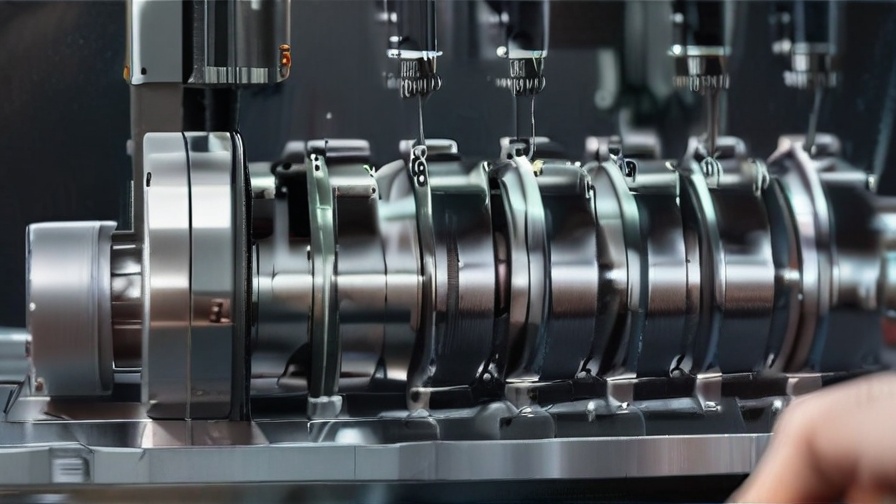
How to use “automatic machining”
Automatic machining, often associated with CNC (Computer Numerical Control) machining, involves using automated tools to manufacture parts with precision. Here’s a concise guide on how to use it:
### 1. **Prepare the Design:**
– **Create a CAD Model:** Use computer-aided design (CAD) software to create a detailed 3D model of the part you want to produce.
– **Convert to CAM:** Use computer-aided manufacturing (CAM) software to translate the CAD model into a format that the CNC machine can understand. This involves generating a G-code.
### 2. **Set Up the Machine:**
– **Load the Material:** Secure the raw material (e.g., metal, plastic) onto the machine’s work table.
– **Install the Tools:** Select and install the appropriate cutting tools (e.g., drills, end mills) into the machine’s spindle.
### 3. **Program the CNC Machine:**
– **Input G-code:** Transfer the G-code from the CAM software to the CNC machine’s control unit.
– **Set Parameters:** Configure machine settings such as speed, feed rate, and tool paths based on the material and the design requirements.
### 4. **Run a Test:**
– **Dry Run:** Perform a dry run without cutting the material to ensure the program runs correctly and the tool paths are accurate.
– **Adjust Settings:** Make any necessary adjustments to the machine settings or G-code based on the dry run results.
### 5. **Start Machining:**
– **Begin the Process:** Start the CNC machine and monitor the machining process. The machine will automatically follow the programmed instructions to cut and shape the material.
– **Quality Check:** Periodically check the workpiece for accuracy and quality. Make any real-time adjustments if needed.
### 6. **Post-Machining:**
– **Remove the Part:** Once machining is complete, safely remove the finished part from the machine.
– **Clean Up:** Clean the machine and work area, and inspect the part for any final finishing or adjustments.
### Benefits:
– **Precision:** High accuracy and repeatability in part production.
– **Efficiency:** Reduced manual intervention and faster production times.
– **Complexity:** Ability to create complex geometries that are difficult or impossible with manual machining.
By following these steps, you can effectively utilize automatic machining to produce high-quality parts efficiently.
“automatic machining” Comparative Analysis
**Comparative Analysis of Automatic Machining**
Automatic machining, a cornerstone of modern manufacturing, encompasses various technologies that automate the production process. Here’s a comparative analysis focusing on key technologies: CNC (Computer Numerical Control) machining, robotic machining, and additive manufacturing.
### CNC Machining
**Advantages:**
1. **Precision and Accuracy:** CNC machines offer high precision and repeatability, making them ideal for complex and detailed parts.
2. **Versatility:** Suitable for a wide range of materials including metals, plastics, and composites.
3. **Scalability:** Efficient for both small and large-scale production runs.
**Disadvantages:**
1. **Setup Time:** Initial setup can be time-consuming.
2. **Cost:** High initial investment in machinery and software.
### Robotic Machining
**Advantages:**
1. **Flexibility:** Robots can perform various tasks (milling, drilling, etc.) and easily switch between them.
2. **Automation:** High degree of automation, reducing the need for human intervention.
3. **Work Environment:** Can operate in hazardous environments, enhancing worker safety.
**Disadvantages:**
1. **Programming Complexity:** Requires sophisticated programming skills.
2. **Precision:** Generally less precise than CNC machines, though this is improving.
### Additive Manufacturing (3D Printing)
**Advantages:**
1. **Design Freedom:** Allows for complex geometries that are impossible or difficult with traditional machining.
2. **Material Efficiency:** Minimizes waste by adding material layer by layer.
3. **Customization:** Ideal for customized, low-volume production.
**Disadvantages:**
1. **Speed:** Typically slower than subtractive methods for large production runs.
2. **Material Limitations:** Limited to specific materials, though this is expanding.
### Comparative Summary
– **Precision:** CNC machining excels in precision, followed by robotic machining and then additive manufacturing.
– **Flexibility:** Robotic machining offers the highest flexibility, with additive manufacturing also providing significant design freedom.
– **Efficiency:** CNC is efficient for high-volume, consistent quality production, while additive manufacturing shines in custom, low-volume scenarios.
– **Cost:** Initial costs are high for CNC and robotic systems but can be offset by long-term efficiency gains. Additive manufacturing has lower entry costs but can be expensive for large-scale production due to slower speeds.
Each technology has unique strengths suited to different aspects of manufacturing, making them complementary in a well-rounded production strategy.
“automatic machining” Warranty and Support
When it comes to “automatic machining” equipment, warranty and support are critical aspects to consider for ensuring uninterrupted operations and optimal performance.
### Warranty
**Coverage:** Most manufacturers offer a standard warranty period ranging from one to three years. This typically covers defects in materials and workmanship under normal use.
**Inclusions:** The warranty usually includes parts replacement, labor, and sometimes on-site service. Software updates and calibration services may also be part of the package.
**Exclusions:** Wear and tear parts, misuse, improper maintenance, and modifications are often excluded. It’s important to read the fine print to understand what is and isn’t covered.
**Extended Warranty:** Some manufacturers provide options for extended warranties at an additional cost. This can be beneficial for long-term peace of mind and cost savings on potential future repairs.
### Support
**Technical Support:** Most companies offer technical support via phone, email, or live chat. This support can help troubleshoot issues, provide software updates, and assist with machine programming.
**On-Site Service:** In case of critical failures, on-site support may be necessary. Manufacturers typically have service engineers who can be dispatched to your location for repairs and maintenance.
**Training:** Comprehensive training programs are often provided to ensure your team can operate the machinery efficiently. This can include initial setup training, ongoing education, and access to online resources or manuals.
**Maintenance Contracts:** Regular maintenance is key to preventing breakdowns. Many manufacturers offer maintenance contracts that include scheduled inspections, cleaning, and adjustments to keep your equipment in top condition.
**Spare Parts Availability:** Ensuring the availability of spare parts is crucial. Manufacturers usually maintain a stock of essential parts and can expedite shipping to minimize downtime.
### Conclusion
Investing in automatic machining equipment is a significant decision. Understanding the warranty and support options available can help protect your investment, ensure continuous operation, and maximize the lifespan of your machinery. Always verify the specifics with your supplier to get the best coverage tailored to your needs.
List “automatic machining” FAQ
### Automatic Machining FAQ
**What is automatic machining?**
Automatic machining involves using computer-controlled machines to perform manufacturing tasks without manual intervention, enhancing precision and efficiency.
**What types of machines are used in automatic machining?**
Common machines include CNC (Computer Numerical Control) mills, lathes, routers, and 3D printers.
**What industries use automatic machining?**
Industries such as aerospace, automotive, medical devices, electronics, and manufacturing heavily rely on automatic machining for precision parts.
**What are the benefits of automatic machining?**
– **Precision:** High accuracy and repeatability.
– **Efficiency:** Faster production rates and reduced labor costs.
– **Flexibility:** Capable of producing complex designs.
– **Consistency:** Uniformity in parts production.
**What materials can be used in automatic machining?**
Metals (aluminum, steel, titanium), plastics, composites, and even some ceramics can be machined automatically.
**What is CNC machining?**
CNC (Computer Numerical Control) machining is a process where pre-programmed computer software dictates the movement of factory tools and machinery.
**How does automatic machining improve productivity?**
By automating repetitive tasks, reducing human error, and allowing machines to operate continuously, productivity increases significantly.
**What is the role of CAD/CAM software in automatic machining?**
CAD (Computer-Aided Design) software creates detailed designs, while CAM (Computer-Aided Manufacturing) software translates these designs into machine instructions.
**Are there limitations to automatic machining?**
Initial setup costs are high, and complex maintenance may be required. Also, not all materials and designs are suitable for every machine.
**What is the future of automatic machining?**
Advancements include increased integration with AI and machine learning, greater automation, improved precision, and expanded material capabilities.
**How can I get started with automatic machining?**
Begin with learning CAD/CAM software, understand basic machining principles, and invest in or access CNC machines for practice.
### Conclusion
Automatic machining revolutionizes manufacturing with its precision, efficiency, and versatility. Understanding its fundamentals and applications can significantly benefit various industries.
Top 10 FAQ with answer about automatic machining for Buyer Sourcing from China
### Top 10 FAQ about Automatic Machining for Buyer Sourcing from China
1. **What is automatic machining?**
Automatic machining refers to the use of computerized and automated machinery (CNC machines) to produce parts with high precision and consistency.
2. **Why should I source automatic machining from China?**
China offers competitive pricing, advanced technology, and a large pool of experienced manufacturers, making it an attractive destination for sourcing.
3. **What types of materials can be machined?**
Common materials include metals (steel, aluminum, brass), plastics (ABS, PVC), and composites. Ensure the supplier specializes in your required material.
4. **How do I find reliable suppliers?**
Use online platforms like Alibaba, Global Sources, and Made-in-China. Verify suppliers through reviews, certifications (ISO, CE), and request samples.
5. **What quality control measures are in place?**
Reputable suppliers adhere to international standards (ISO 9001). They perform inspections, provide material certificates, and conduct final product testing.
6. **What are the lead times for production?**
Lead times vary but typically range from 2 to 6 weeks, depending on order complexity and quantity. Confirm with the supplier before placing an order.
7. **How are shipping and logistics handled?**
Suppliers usually handle shipping via air or sea. Ensure they have experience with international logistics and provide proper documentation (Bill of Lading, HS Codes).
8. **What payment terms are commonly accepted?**
Common terms include T/T (Telegraphic Transfer), L/C (Letter of Credit), and PayPal. Negotiate terms that balance security and flexibility.
9. **Can suppliers provide custom machining services?**
Yes, most suppliers offer custom machining based on your CAD drawings or specifications. Discuss your requirements in detail to ensure feasibility.
10. **What should I consider when evaluating cost?**
Consider material costs, machining complexity, order volume, and shipping fees. Request detailed quotes and compare them across multiple suppliers for the best deal.
These FAQs provide a concise overview to help you navigate the process of sourcing automatic machining services from China.

